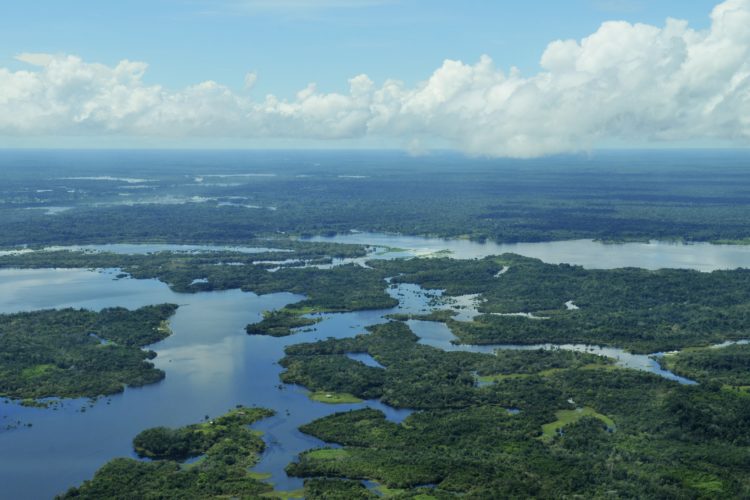We have much more to do and your continued support is needed now more than ever.
Monumental Win: Amazon Soy Moratorium Renewed Indefinitely

This agreement is a monumental win for wildlife, people, and our climate. The Amazon is home to an incredible array of wildlife, including iconic species such as macaws, jaguars, and ocelots as well as migratory birds that travel south for the winter, such as eastern kingbirds and peregrine falcons.
The Amazon Soy Moratorium is an agreement among major soybean traders to not purchase soy grown on land that was deforested after 2006 in the Brazilian Amazon. For nearly 10 years, the Amazon Soy Moratorium has effectively protected forests from being slashed and burned to make way for soybeans. But, despite these positive impacts, the Soy Moratorium was in jeopardy nearly every single year, requiring annual re-negotiations to renew it.
With each renewal also came another built-in expiration date, which continually threatened to jeopardize the future of the agreement, and the fate of critical wildlife habitat. Just a few years ago, the Soy Moratorium was in the cross-hairs, with some in industry pushing to dismantle key protections and effectively terminate the agreement. The recent announcement to continue the Amazon Soy Moratorium without a built-in expiration date means that the protections currently in place are no longer at risk each year.

Amazon Soy Moratorium in Action
A study published last year by researchers from the U.S. and Brazil as well as policy experts from the National Wildlife Federation, demonstrated that the Soy Moratorium reduced deforestation for soy in the Amazon. Prior to the Soy Moratorium, nearly a third of new soy planted in the Amazon directly replaced forests, but under these current protections, this has fallen to less than 1%. This analysis provided clear evidence that the Soy Moratorium had been far more effective at stopping deforestation for soy than government policy alone, with farmers nearly five times more likely to violate the law than the Soy Moratorium.
Since the Soy Moratorium was implemented in 2006, Brazilian soy exports have more than doubled, and soy plantings in the Amazon have continued to grow, but not at the expense of forests. This demonstrates that it is possible to achieve win-win solutions for business and conservation.
The results from this study provided strong science-based evidence of the impacts and effectiveness of the Soy Moratorium, which directly informed NWF’s corporate engagement strategy and our discussions with companies. This research was used by NWF as well as many other organizations, government agencies, companies, and academics to help push for a longer term solution, which has culminated in the recent agreement to indefinitely continue the Soy Moratorium.
Celebrating Today, with an Eye on Tomorrow
The Amazon Soy Moratorium has been widely recognized for its role in reducing deforestation in the Brazilian Amazon. As one of the first large-scale solutions to agriculture-driven deforestation in the tropics, the Amazon Soy Moratorium has also helped pave the way for other important “zero deforestation” initiatives in the cattle and palm oil industries.
With the recent announcement of a more permanent agreement (that does not include an expiration date, and the associated fights for its renewal every year), the Brazilian soy industry can now turn its attention to adopting and implementing similar “zero deforestation” commitments for other important ecosystem, such as the neighboring Brazilian Cerrado (sehr-RAH-doh) and the Gran Chaco, which spans parts of Bolivia, Paraguay and Argentina.
The Cerrado and Gran Chaco are home to an incredible array of wildlife and represent important conservation targets. Halting deforestation and ensuring environmental protections in these regions will be critical in terms of maintaining healthy wildlife habitats, reducing the impacts of climate change and ensuring the long term viability of agriculture and other economic activities in these regions.
Please join us in celebrating this monumental win for wildlife by retweeting the following:
Learn More#Amazon #SoyMoratorium renewed indefinitely, protecting #forests in #Brazil. https://t.co/2AuKhD5pVr pic.twitter.com/Fz4Hv6hLoI
— National Wildlife Federation Action Fund (@wildlifeaction) May 11, 2016






















